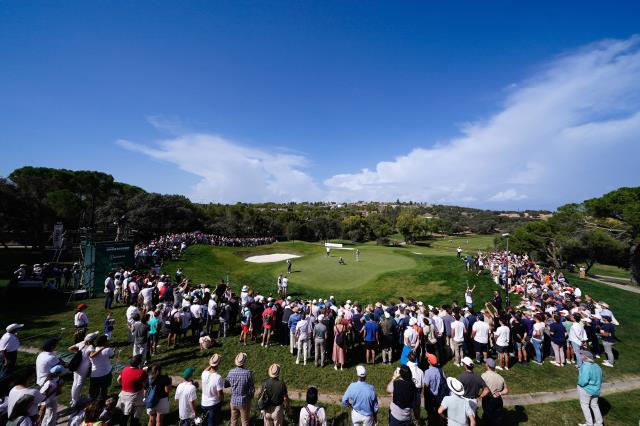Spanish golf ended the year 2024 with 305,603 members, 303,913 of them amateurs and 1,690 professionals, according to the official tally as of 31 December.
This figure represents an absolute increase of 6,644 licences over the past year, which in percentage terms is 2.2% more than at the beginning of the year.
Both absolute and percentage figures consolidate the growth experienced over the last six years, a period of consolidation that has allowed us to gradually overcome the effects of the economic crisis and the health crisis caused by the coronavirus between 2011 and 2020.
After that difficult period, the idiosyncrasies of golf – a healthy sport, played outdoors, safe, which naturally establishes safe distances – have in recent years attracted many people, who find golf to be a healthy activity from both a physical and psychological point of view.
This increase in golf licences is the sixth consecutive year of growth, thus breaking the long streak of nine consecutive years of decline experienced in the period between 2011 and 2019, coinciding with much of the prolonged economic crisis and social changes that conditioned for many years the development of very diverse sectors of Spanish society.
This last six-year period, with an overall growth of 12.0%, also confirms a trend that started in 2013, when the peak of the decrease was reached – namely 6.0% – and then slowed down in 2014 (-3.7%), 2015 (-2.7%), 2016 (-1.5%), 2017 (-0, 5%) and 2018 (-0.3%) before giving way to growth of 0.1% in 2019 and 2020, 4.8% in 2021, 3.0% in 2022, 1.8% in 2023 and 2.2% in 2024, which draws a curve that, in statistical terms, is understood as a turning point from the aforementioned moment.
Taking a longer period of time as a reference, it is worth remembering that in 1990 there were 45,000 players in Spain; the 100,000 mark was passed in 1996; 200,000 were registered in the first months of 2002; in mid-2004 there were 250,000 and at the end of 2006 the 300,000 mark was exceeded. The maximum peak in the number of licences occurred in 2010, when there were 338,588 members, and since then the inflection curve described above has begun.
Data by Autonomous Community
During 2024, the performance in the different Autonomous Communities was firm in practically all of them, with positive data being the keynote of the year, with some significant upward variations.
In absolute terms, Madrid, with 94,999 members, accounted for 31.0 % of the total number of licences, followed by Andalusia, with 51,902, and Catalonia, with 29,702, accounting for 17.0 % and 9.7 % of the total number of members, respectively.
Comunidad Valenciana (22,405), País Vasco (18,233), Castilla y León (14,485) and Galicia (12,633) are the other Autonomous Communities with more than 10,000 members.
The one that added the most licences during the 2024 financial year was Madrid, with 2,306 members (2.5% more), followed by Andalusia (1. 072 members, up 2.1%), Comunidad Valenciana (949 members, up 4.4%), Cataluña (470 members, up 1.6%), Murcia (414 members, up 5.6%), Galicia (374 members, up 3.0%), Balearic Islands (336 members, up 4.0%), Cantabria (149 members, up 1.9%), Aragon (118 members, up 1.8%), Castile and Leon (110 members, up 0.8%), Basque Country (106 members, up 0.6%)…
In percentage terms, it is worth highlighting those Autonomous Communities that have exceeded the average growth of 2.2% experienced at the national level. This was the case, in first place, of Murcia, with the aforementioned 5.6% increase.
The Valencian Community and the Balearic Islands, with 4.4% and 4.0%, are also in this outstanding group, while Extremadura (3.3%), Galicia (3.0%) and Madrid (2.5%) also increased their membership above the average.
At the opposite pole are three Autonomous Communities that lost members in 2024 -Navarra and the autonomous cities of Ceuta and Melilla-, although in all cases moderately or very moderately, with records that do not reach 7 members on average per geographical demarcation.
Women and junior golf in Spain
It should be noted that the number of women’s licences currently stands at 83,882, an increase of 1,805 licences compared to last year. In relative terms, this represents 27.5% of the total number of golf licences in Spain.
Of these, 48,920 correspond to women over 50, 22,712 to women between 21 and 50 and 12,117 to those under 21, with a special mention for the 8,173 under 16 years of age.
Among the youngest members, it is worth highlighting that the Spanish golf quarry is made up of 23,739 boys and girls under 16 years of age -almost 37,000, 36,727 to be precise, if the age range is extended to 21 years-, which in percentage terms represents 7.8% or 12.0% of the total number of members, respectively.
It should be noted in this case that the Spanish golf base continues to expand little by little, as at the beginning of 2015 there were 21,530 under 16s -33,682 up to the age of 21-, which in percentage terms then represented 7.6 % or 11.9 %, respectively.
This process of gradual growth coincides with the progressive and gradual implementation of the Golf in Schools Programme, the Friends Cup and various promotional activities among youngsters that have been carried out jointly by the RFEG, Autonomous Federations and Clubs for several years now.
Read complete news with related documentation
Source: Royal Spanish Golf Federation

